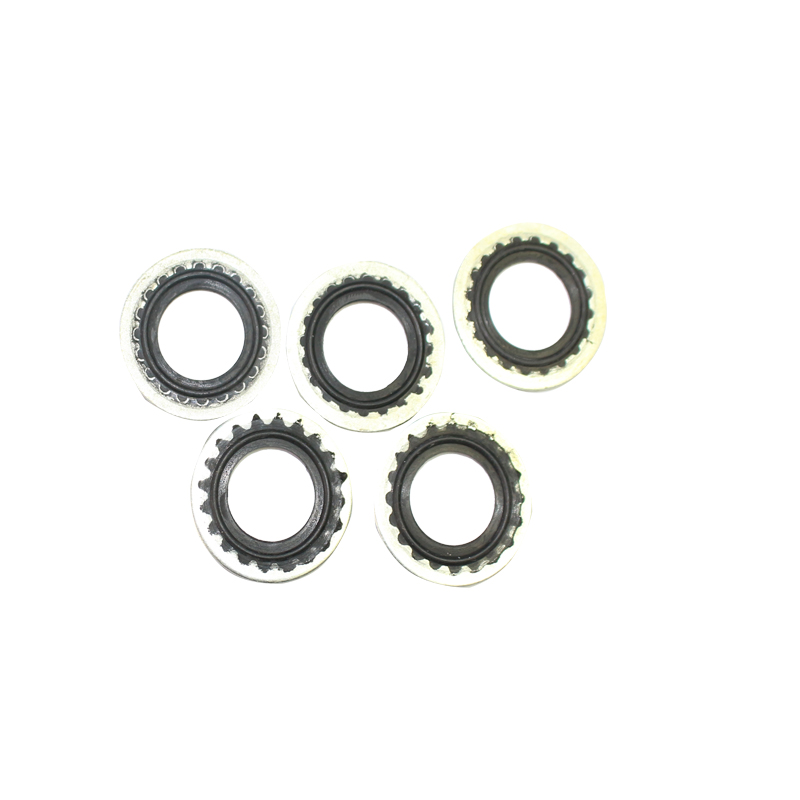Understanding the Importance and Functionality of O-Ring Gaskets in Various Applications and Industries
Understanding O-Ring Gaskets Function, Applications, and Materials
O-ring gaskets are crucial components in various mechanical systems, serving as seals that prevent the leakage of fluids and gases. These toroidal seals are made from a variety of materials and are widely used across several industries, including automotive, aerospace, and manufacturing, due to their effectiveness in creating airtight and watertight seals.
Function of O-Ring Gaskets
The primary purpose of an O-ring gasket is to create a seal between two surfaces. When compressed, the O-ring fills the space between the two surfaces, preventing the passage of liquids or gases. This characteristic is vital in applications where maintaining pressure and avoiding contamination is crucial. The simple design of O-ring gaskets significantly contributes to their reliability; they can tolerate a range of temperatures and pressures when made from the appropriate materials.
The installation of O-rings is relatively straightforward, which simplifies assembly processes. They can be placed in grooves on static or dynamic surfaces with ease. In dynamic applications, such as rotating shafts, O-rings are designed to withstand movement while still maintaining an effective seal.
Applications of O-Ring Gaskets
O-ring gaskets find application in various settings due to their versatility. In the automotive industry, they are commonly used in engine components, fuel systems, and hydraulic systems, where they help maintain component integrity and ensure proper functionality. In the aerospace sector, O-rings are employed in fuel systems, hydraulic systems, and environmental control systems, where they must withstand extreme temperatures and pressures.
Industrial machinery often relies on O-ring seals in pumps, compressors, and valves, where preventing fluid leakage is essential for operational efficiency. Medical devices also utilize O-rings, as they can ensure sterility and prevent cross-contamination in sensitive equipment. Their ability to be customized in terms of size, material, and color further enhances their application range.
o ring gasket

Materials Used for O-Ring Gaskets
The effectiveness of an O-ring gasket is largely dependent on the material from which it is made. Common materials include rubber derivatives like nitrile (Buna N), silicone, and fluorocarbon (Viton). Each material offers distinct advantages tailored for specific applications
1. Nitrile (Buna N) - This is the most widely used O-ring material due to its excellent resistance to oil, fuel, and other chemicals. It functions effectively in temperatures ranging from -40°F to 250°F.
2. Silicone - Known for its flexibility and heat resistance, silicone O-rings can operate in high-temperature environments, making them suitable for applications that involve heat, such as automotive engines.
3. Fluorocarbon (Viton) - Viton O-rings provide superior chemical resistance and can function effectively at high temperatures and pressures, often used in aerospace and chemical processing industries.
4. Polyurethane - This material combines the elasticity of rubber with the toughness of thermoplastics, making it ideal for dynamic applications where wear resistance is critical.
Conclusion
In summary, O-ring gaskets are integral components in a vast array of mechanical systems, providing reliable seals that prevent leakage of fluids and gases. Their ability to be tailored in size and material makes them remarkably versatile. Understanding the function and applications of O-ring gaskets is essential for engineers and designers looking to enhance the performance and reliability of their products. With continued advancements in materials science, the applications and efficacy of O-ring gaskets will undoubtedly expand, addressing the evolving needs of various industries.
-
Understanding the Importance of the Crankshaft Oil Seal in Engine Performance
News Jun.16,2025
-
The Unsung Heroes of Engine Protection: Understanding Automotive Shaft Seals and Oil Seals
News Jun.16,2025
-
Keeping the Engine Tight: The Role of Crankshaft Seals and Gaskets in Oil Control
News Jun.16,2025
-
Complete Protection in Harsh Conditions: A Deep Dive into Cassette Seals
News Jun.16,2025
-
Choosing the Right Oil Seal: A Guide to Trusted Brands and Suppliers
News Jun.16,2025
-
Advanced Sealing Technologies: Exploring the Range of Modern Oil Seals
News Jun.16,2025
-
Your Essential Guide to Car Repair Kits: From Rust to Dings
News Jun.13,2025
Products categories















